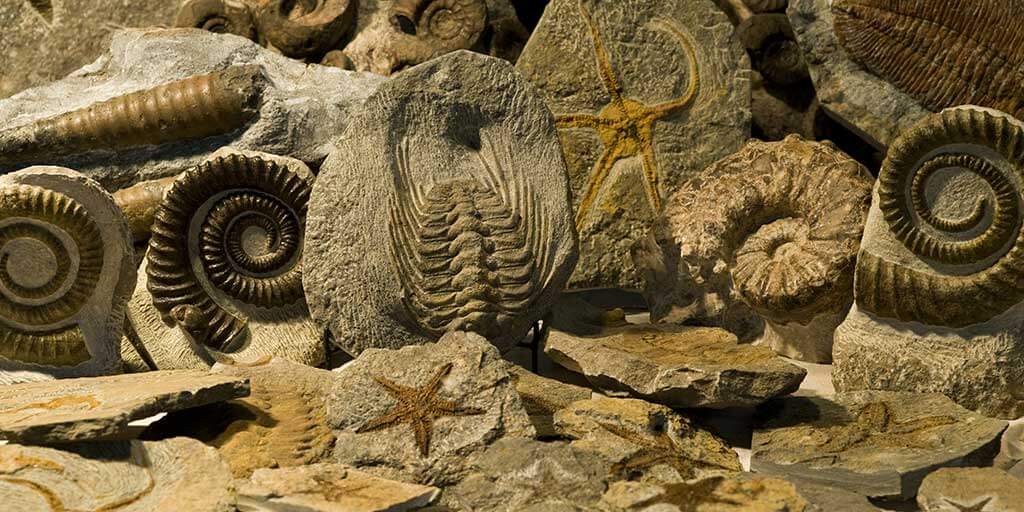| By: Dr. John Ankerberg, Dr. Duane Gish and Dr. Kurt Wise; ©2002 |
| Does the fossil record support evolution? What does the lack of transitional forms mean? Are there sufficient fossils to draw reasonable conclusions? |
Editor’s note: In June 1990 The John Ankerberg Show taped a series of interviews with men from several branches of the sciences regarding the evidence for creation. For technical reasons we were unable to air these interview. Nevertheless, we have decided to release portions of these interviews in a series of articles so you could read the arguments that were being made at that time—more than a decade ago.
Considerable effort has been made to quote the gentlemen correctly. We have attempted to find the correct spelling of the scientific terms used. However, the reader should keep in mind that this is a transcription of oral interviews. Mistakes in spelling and in the technical language should be laid at the feet of the editor.
The Creation Debate - Part 7
The Fossil Record - Part 1
- Dr. John Ankerberg: We are taping this program in historic Dayton, Tennessee, where the Scope’s Trial was held. During that trial there was reference made to the fossil record in support of evolution. And we want to take another look at it. Dr. Wise, I would like you to bring us up to date. What is the importance of the fossil record concerning the evidence for evolution and the evidence for creation? What are the two theories? What does the fossil record have to do with this?
- Dr. Kurt Wise[1]: The theory of evolution that I’ll be focusing on right now is the theory that might be called macroevolution. That theory would maintain that all the major groups of organisms which we might call phyla, are monophyletic in origin. What that means is that they all had a common ancestor. All life, in fact, is thought to have had a common ancestor and so all the major groups we see today have evolved or changed from that common ancestor. That’s the evolutionary model.
- The creation model would maintain that the major groups of life are actually polyphyletic in origin, which means that they had independent origins. Not a common origin, but an independent origin. So what we hope to show is that there exists no evidence for a common ancestor and in fact the complexity of the organism seems to demand that they came into existence by intelligent design.
- Ankerberg: Okay, how many fossils have we found? Have they ever counted them up? Wise: Many, many billions.
- Ankerberg: All right. And from that evidence, let’s start off, what have you found?
- Wise: I think we can turn to Dr. Duane Gish here for a discussion on the origin of the major groups of life.
- Ankerberg: All right. Duane.
- Dr. Duane Gish[2]: Yes. The Cambrian rocks represent the rocks in which we first find abundant evidences of complex life or some of the most abundant complex forms of life. We find sponges and jellyfish, and worms, and brachiopods, and trilobites, and worms, and sea cucumbers and things like that. Very complicated.
- Now, what we see in the fossil record is huge morphological gaps between these various basic types. And we see that from the very beginning. I want to document that by quoting from the chapter called “The Evolution of Complex Animals” written by James W. Valentine. (I want to make clear that he is an evolutionist. He does think that these creatures have evolved.) This is found in the book What Darwin Began, edited by Laurie Godfrey, who also has written a book against creationists. But what he says here, I think is very significant. Dr. Valentine says this, “The fossil record [this is found on page 263 of this book, by the way] is of little use in providing direct evidence of the pathways of descent of the phyla or of invertebrate classes. Each phylum with a fossil record had already evolved its characteristic body plan when it first appeared, so far as we can tell from the fossil remains. And no phylum is connected to any other via intermediate fossil types. Indeed, none of the invertebrate classes can be connected with another class by a series of intermediates.”
- You see what he says, “No phylum can be connected to any other phylum.” We have discontinuity, not a continuum. Evolution demands a continuum, but what we have is discontinuity.
- Now, what we have here from the fossil record, from the actual historical record, the actual evidence, is the fact that they have multiple origins as Dr. Wise has suggested creation would expect. We find that they have had multiple origins as far as this record is concerned. Clams, snails, trilobites. When we first find a trilobite in a fossil record it’s a trilobite, and we don’t have it led up to by a series of transition forms.
- Now, the same is true when we go from the invertebrates to the vertebrates, or the fishes. There is a huge morphological gap there—just boggles the mind as a matter of fact—because each one of the major fish kinds appear fully formed. Now, of course evolutionists would suggest that there must have been quite an enormous time span going from some invertebrate to a fish as we change an invertebrate, either a soft-bodied form or a form with hard outer and soft inner parts to a vertebrate, which has soft outer parts and hard internal skeleton.
- And, so they suggest quite a large time span is involved, and it seems to me that billions times billions of these intermediates would have lived and died during that vast time span. And we do have as Dr. Wise mentioned, billions at least, potentially available of these invertebrates. Our museums have many tens of millions of fossils of fishes, it seems reasonable...
- Wise: Duane, not all evolutionists feel that there was a large amount of time there. Gish: Well, there would be a considerable time gap.
- Wise: What do you mean by considerable?
- Gish: When you see the first invertebrates, the time when you find the first fishes, they would say at least 50 million years, I think, so there’s, well, there’s a considerable time gap there.
- Wise: But that isn’t demanded by evolutionary theory.
- Gish: Well, it shows by the evidence since we suppose time between the first appearance of the invertebrates and the first appearance of the fishes, at least as far as they are saying is about 50 million years. So, empirically, then it would be on their time scale to be 50 million years. Something like that.
- Anyhow, going from one to the other should have produced considerable fossil record.We ought to have, it seems to me, a vast number of these forms in our museums. But as amatter of fact, we don’t find these intermediate forms. For example, I have an article here published by Errol White, He is one of the senior paleontologists at the British Museum of the Natural History, is an ichthyologist, an expert on fishes. This was his presidential address to the Linnean Society and was on lung fishes. This is what he says in the article, on the last page of the article, “But whatever ideas authorities may have on the subject, the lung fishes, like every other major group of fishes that I know, have their origins firmly based in nothing.” And he italicizes the word “nothing” to emphasize it.
- It is true, you take the three major divisions of bony fishes, every one of them appears, they are bony, they’re very diverse when they first appear and we do not have a trace of an ancestor for any of these major bony fishes. Now, it seems to me, it would stretch our credulity to the breaking point to suggest we could have all that evolution without leaving a trace. It seems to me if we ask ourselves a question, then, which model of origins, creation or evolution, do the data fit best, it seems to me we would have to say it fits the creation model far better than the evolutionist. Now, the evolutionist is trying to find his way out of this dilemma, and they’ve suggested many ideas, but they admit, most of them would, that the dilemma still exists. The Cambrian explosion as it is called is still a great puzzle.




Leave a comment